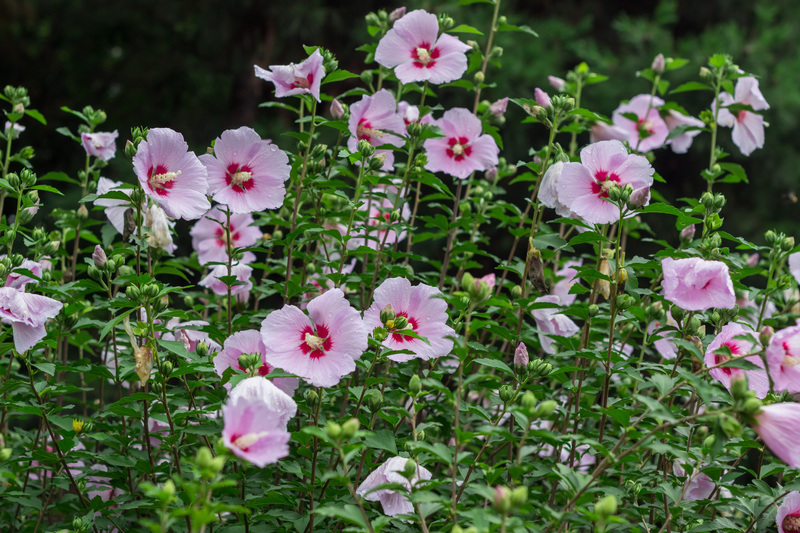Sculpting Nature: Hedge Trimming Techniques and Designs
Posted on 30/08/2025
Sculpting Nature: Hedge Trimming Techniques and Designs
Sculpting nature is both an art and a science. Through hedge trimming techniques and creative designs, you can transform ordinary shrubs into elegant borders, privacy screens, or living masterpieces. Whether you are a homeowner seeking curb appeal or a garden enthusiast exploring unique shapes, mastering hedge trimming opens a realm of possibilities. This comprehensive guide delves into the essential methods, tools, inspirations, and maintenance tips to help you create, shape, and sustain stunning hedges in your landscape.
Why Invest in Hedge Trimming?
Hedge trimming serves several key purposes:
- Enhances the aesthetic appeal of gardens and properties
- Encourages healthy growth by removing dead or diseased branches
- Improves privacy and security by creating dense, solid barriers
- Defines spaces within the landscape with clean, crisp lines or flowing curves
- Presents creative opportunities through topiary and formal designs
Well-maintained hedges not only beautify your surroundings, they also increase the value and enjoyment of your outdoor space.

Understanding the Basics: What is Hedge Trimming?
Hedge trimming is the process of cutting and shaping shrubs or bushes to achieve a desired size or form. This gardening practice ensures hedges remain healthy, tidy, and visually pleasing. Common hedge types include evergreens like boxwood, yew, and holly, as well as deciduous varieties such as privet and hornbeam.
Difference between Pruning and Trimming
Pruning targets specific branches for health, while hedge trimming focuses on shaping and surface tidy-up. Both are important, but regular maintenance trimming creates the uniform look prized in formal gardens.
Essential Hedge Trimming Tools
Equipping yourself with the right hedge trimming tools is crucial for efficient and accurate results.
- Hand Shears: Best for detail work and small hedges. Offers precision for shaping.
- Hedge Trimmers: Available in manual, electric, or gas-powered options for larger or more robust hedges.
- Loppers: Used for cutting thicker branches that shears can't handle.
- Pruning Saws: Helpful for removing older or bulkier stems within the hedge.
- String and Stakes: Essential for achieving straight, level cuts and symmetry in hedges.
- Protective Gloves and Eye Wear: Safety first--hedge trimming can get messy!
Tip: Always keep blades sharp for clean cuts to avoid damaging plant tissue, which can lead to disease.
When Is the Best Time to Trim Hedges?
The timing of hedge trimming depends on the species, climate, and your intended style. In general:
- Evergreen Hedges: Trim in late spring or early summer once new growth has settled.
- Deciduous Hedges: Late winter or early spring is ideal before buds break.
- Flowering Hedges: Prune after flowering to avoid cutting off future blooms.
Frequent light trimming is preferable to infrequent heavy cutting, preserving the health and appearance of your hedge.
Hedge Trimming Techniques: From Basic to Artistic
1. Basic Shaping Techniques
Beginner-friendly hedge trimming techniques focus on achieving uniformity and density.
- Flat-Top: Ideal for borders, this simple shape uses a string guide and level cuts for a crisp appearance.
- Angled Sides: Trimming hedges slightly wider at the base ensures sunlight reaches lower leaves, preventing bald spots.
- Rounded or Dome-Shaped: Encourages resilient growth and a softer landscape look.
Pro Tip: Always step back and check your work from a distance for balance and symmetry.
2. Formal Hedge Trimming Designs
Formal hedges are trimmed into straight, geometric shapes, often forming walls or borders.
- Box Hedges: Classic and elegant, boxwood is often used for dense, straight-edged forms.
- Low Parterres: Ornamental patterns in gardens, usually less than a foot tall, requiring meticulous trimming.
- Topiary Shapes: Intricate designs ranging from simple spheres and cones to animals and abstract forms. Topiary is a true test of skill and vision.
Formal designs require regular trimming--often two to three times per season--to maintain crisp edges.
3. Informal and Naturalistic Hedges
For a relaxed vibe or wildlife-friendly garden, use looser hedge trimming techniques:
- Feathered Edges: Allow shrubs to retain some natural growth, creating a soft, blended boundary.
- Layered Hedges: Combine different species for textural or color contrast, shaping minimally to encourage a tapestry effect.
- Arching and Flowing Forms: Use gentle curves instead of harsh lines, enhancing movement and visual interest.
Remember: Less frequent trimming allows flowering and fruiting, attracting beneficial insects and birds.
4. Advanced: Artistic and Thematic Hedge Sculptures
Take hedge sculpting to the next level with creative hedge designs:
- Animals and Figures: Use wire frames as guides for ambitious shapes like birds, rabbits, or even people.
- Architectural Features: Sculpt towers, arches, and spirals for dramatic garden features.
- Seasonal or Holiday Designs: Shape hedges into hearts, stars, or other festive motifs for annual displays.
These living sculptures require patient, consistent trimming and a keen artistic eye.
Selecting the Right Hedge Plants for Sculpting
Choosing the right plant species is crucial for achieving lasting and beautiful hedge designs. Consider these popular options:
- Boxwood (Buxus): Favored for dense, slow growth and small leaves. Excellent for tight designs and topiary.
- Yew (Taxus): Flexible and long-lived, yews recover well from trimming and maintain crisp lines.
- Privet (Ligustrum): Fast-growing and adaptable, making it a go-to for taller, quick privacy hedges.
- Laurel (Prunus laurocerasus): Great for lush, broadleaf screens and informal styles.
- Holly (Ilex): Adds winter interest with glossy leaves and attractive berries.
- Hornbeam and Beech: Ideal for semi-formal deciduous hedges that hold dried leaves in winter.
Tip: For intricate topiary and geometric designs, choose small-leaved species with uniform branching habits.
Step-by-Step Guide: How to Trim Hedges Like a Pro
- Prepare Your Tools: Clean and sharpen all blades. Check power tools for safety.
- Plan Your Design: Visualize or mark the intended shape with string, pegs, or guides.
- Start from the Bottom: Trim sides first, working from bottom upward. Keep the base wider for stability and light access.
- Shape the Top: Use a level or string as a guide. Trim the crown last to smooth out the finished look.
- Check Regularly: Step back between cuts to assess symmetry from various angles.
- Clear Debris: Remove all trimmings promptly to prevent fungal issues.
- Water and Feed: Give your hedge a thorough watering and consider fertilizer to support new growth after trimming.
Common Hedge Trimming Mistakes to Avoid
- Trimming at the wrong time of year can stress plants or reduce flowering potential.
- Cutting too harshly damages stems, leading to sparse regrowth or disease entry points.
- Neglecting the base, causing lower branches to die back due to lack of sunlight.
- Using blunt tools that tear rather than slice, harming plant health.
- Impatience--rushing the process reduces precision and can create uneven results.
Patience and attention to detail are the foundations of stunning hedge trimming designs.
Inspirations: Creative Hedge Sculpting Ideas
Ready to transform your green spaces? Here are some hedge design ideas for all styles and skill levels:
- Knot Gardens: Intricately patterned low hedges that weave and twist in geometric perfection.
- Maze Gardens: Create playful paths and secret passageways from tall, clipped hedges.
- Themed Topiary: Craft fantasy creatures, garden gnomes, or favorite animals for whimsical touches.
- Modern Minimalism: Slice hedges into cubic, rectangular, or asymmetrical shapes for a contemporary vibe.
- Naturalistic Screens: Blend multiple species with minimal trimming for an eco-friendly privacy wall.
- Framing Views: Use sculpted arches or windows within hedges to frame garden vistas or highlight focal points.
Maintaining Your Sculpted Hedges
Beautiful hedge sculptures require ongoing care. Here's how to keep your living art healthy and sharp:
- Trim frequently: Light but regular trims encourage thick, resilient growth and sharper shapes.
- Inspect for pests and disease: Early detection ensures problems don't mar the appearance or health of the plant.
- Water and fertilize: Especially during dry spells and after pruning flushes, support regrowth with deep watering.
- Mulch around the roots: Helps retain soil moisture and suppress weeds.
- Protect in winter: For sensitive species, shield from wind and frost if necessary.
Tip: Document your designs with photos and notes, tracking progress and refining your techniques over time.

Sustainable and Wildlife-Friendly Hedge Trimming
Practicing eco-friendly hedge trimming benefits both your garden and local biodiversity. Consider these approaches:
- Trim outside nesting season: Birds often nest in hedges from March to August--avoid disturbing them for a thriving ecosystem.
- Leave some sections untrimmed: Allowing areas to flower or fruit supports pollinators and wildlife.
- Choose native species: They require less maintenance and provide food and shelter for local fauna.
Blending creative design with ecological sensitivity results in more sustainable, resilient landscapes.
Conclusion: Mastering the Art of Hedge Trimming
Sculpting nature through hedge trimming techniques and designs transforms ordinary gardens into extraordinary outdoor experiences. With patience, practice, and the right inspiration, anyone can elevate their landscape--shaping privacy, beauty, and artistic expression from living green walls. Whether aiming for formal precision or imaginative whimsy, every cut shapes the future of your garden. Embrace the possibilities of hedge sculpting and let your creativity flourish!
Ready to make your mark? Start practicing these hedge trimming techniques and designs today, and let your garden become a testament to your artistry and care for the natural world!

